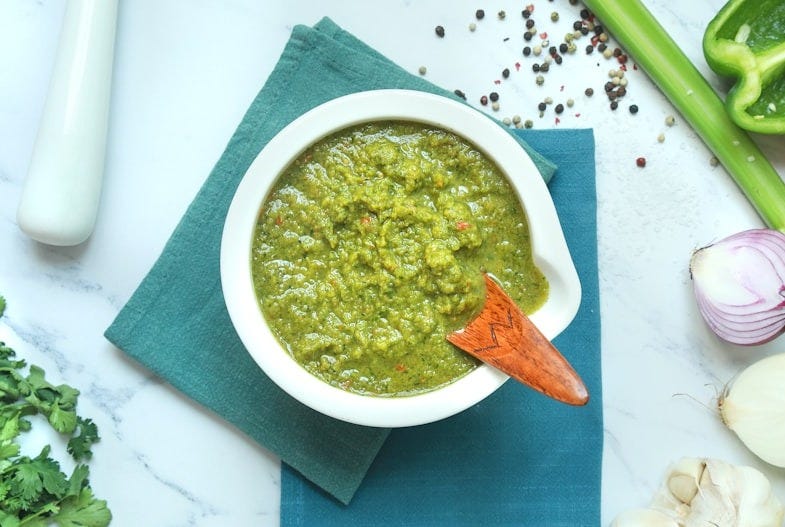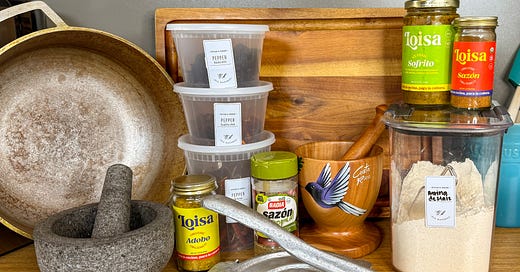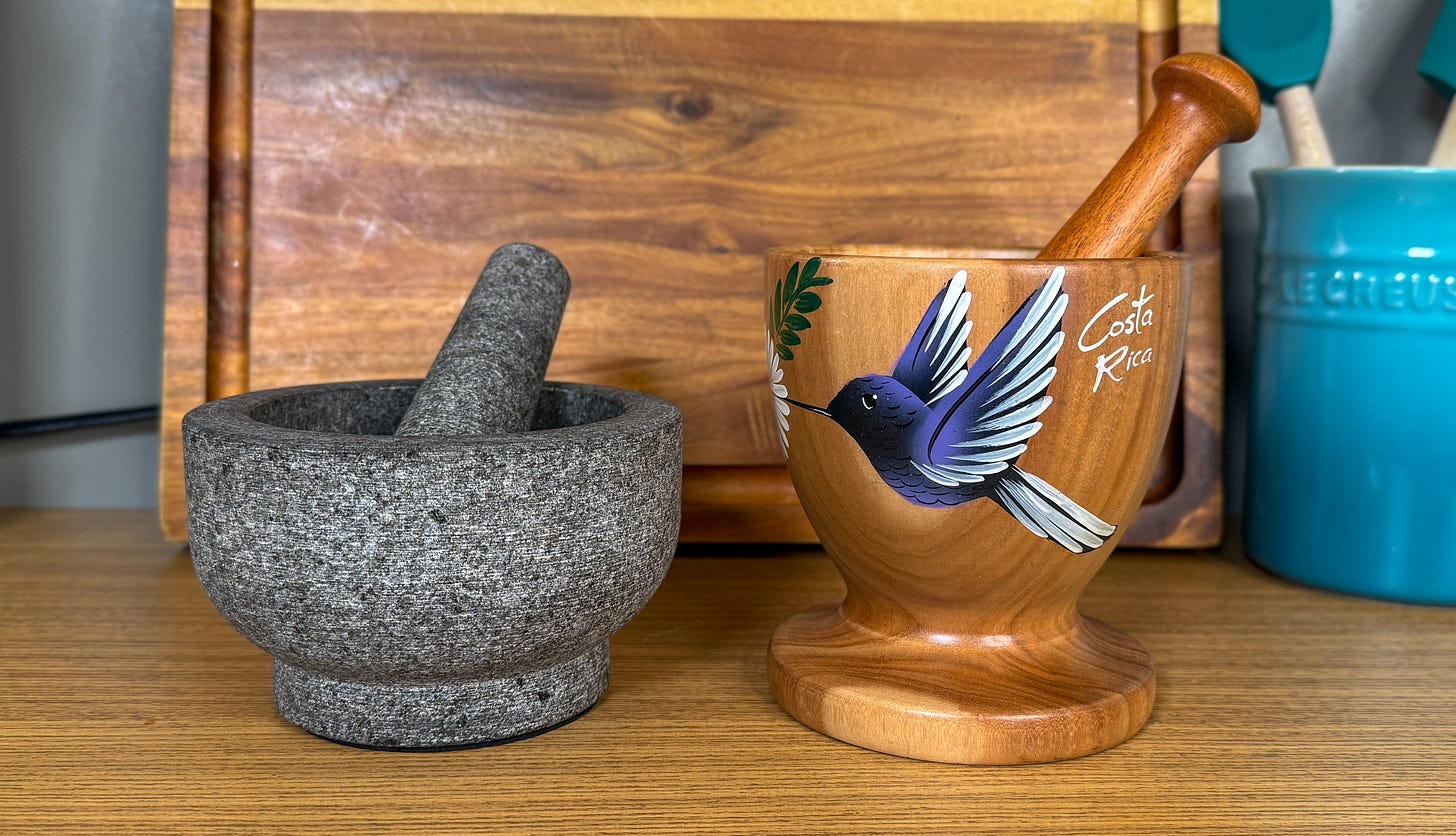7 Hispanic Cooking Essentials I Always Have in My Kitchen
My Ride-or-Die Tools & Pantry Staples for Cooking Latin Food at Home
Whether you grew up in a Hispanic household or you're just now learning to make arroz con pollo from scratch, there are certain tools and ingredients that every Latin kitchen swears by. These are the ones I reach for again and again.
The best part? Most of these are super affordable and easy to grab online. I included some links throughout the post in case you want to build (or level up) your own Hispanic kitchen setup!
1. Tortilla Press
A tortilla press is one of those tools that seems super specific, but it actually does a lot. Obviously, it's made for tortillas—and once you taste a fresh, homemade one, you'll never want store-bought again. But I also use mine to flatten tostones (after the first fry), shape arepas, and even roll out dough for pupusas. It's fast, it's fun, and it’s a real workout for your elbows.
If you love texture and crave that handmade touch in your food, this one’s a game-changer.
2. Molcajete or Pilón
These are two different tools, but they play similar roles and I genuinely love both.
A molcajete is a heavy stone mortar and pestle traditionally used in Mexican kitchens to grind down dried spices, make salsa from scratch, or even mash avocados for guac. It provides texture and flavor, which is something you just don’t get from a blender.
A pilón, on the other hand, is more common in Caribbean homes (especially Dominican, Puerto Rican, and Cuban ones). It’s usually wooden or metal and used to mash garlic, herbs, and onions into a base for sofrito or marinades.
Puerto Ricans use it to make their national dish, Mofongo, and Dominicans use it to make Mangú, which is also part of their National Dish (Los Tres Golpes).
It's truly a "soul in the kitchen" kinda item, and they make great counter decor.
🛒 Molcajete made in Mexico
🛒 Wooden pilón
3. Caldero Pot
This is one of those pieces that looks simple but does everything. The caldero is an aluminum Dutch oven with a tight-fitting lid, and it’s the cornerstone of so many Caribbean recipes. It heats evenly, holds in moisture, and creates that perfect bottom-of-the-pot rice crust we live for (a.k.a. concon or pegao).
Because it holds heat evenly, it is also a great kitchen staple for deep frying. I use this pot even if I’m making American fried chicken or Japanese katsu.
I also use mine for arroz con gandules, sancocho, beans, stews—you name it. It’s versatile, reliable, and honestly... it gets better with time. Mine looks very well loved, and that’s the sign of a good caldero.
🛒 The caldero pot you can beat up over time
4. Sofrito

Sofrito is not a tool, but it is an essential. It’s a blend of herbs, peppers, onions, and garlic, forming the flavor base of many Caribbean and Latin American dishes. Each region has its own version, and every family has their own twist.
I make mine fresh in batches and store it in two different ways. The first is to save some in a Mason jar and keep it in the fridge for 3-4 weeks. The rest I store in silicone ice cube trays that last up to 3 months in the freezer. When I’m ready to make a dish, I pop out a couple of the frozen cubes, add them to a saute pan, and they melt seamlessly into the pan.
You throw it into rice, beans, stews, meat marinades—basically everything. It’s one of those things where once you start cooking with it, you can’t imagine not having it around.
To make it, you just have to wash your fresh vegetables and herbs, de-stem and remove the seeds from the various peppers, and blend all of your ingredients into a smooth marinade.
My Sofrito Recipe (with substitutions):
Keep reading with a 7-day free trial
Subscribe to A Taste of Sazon to keep reading this post and get 7 days of free access to the full post archives.






